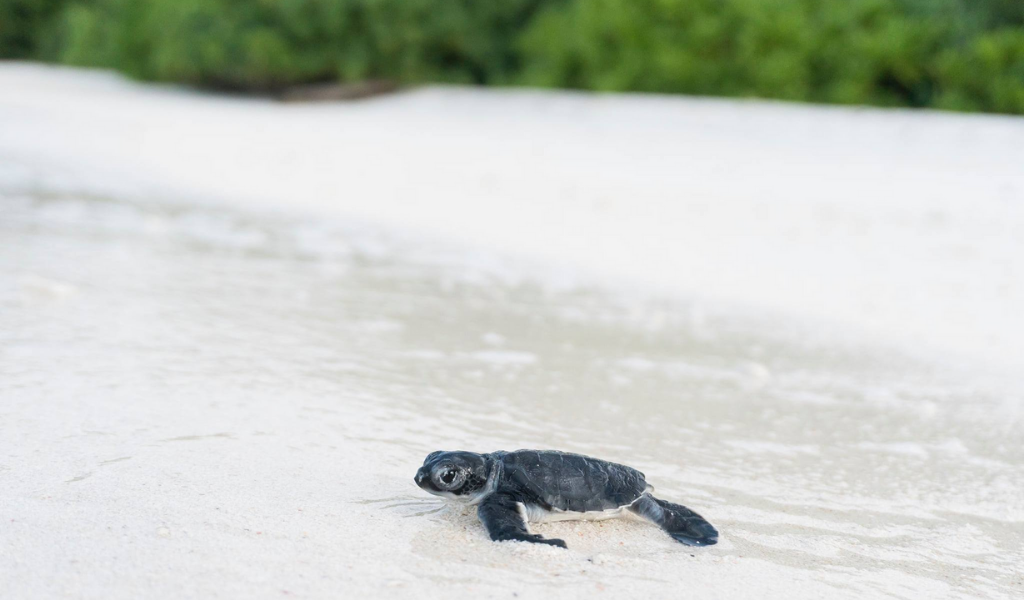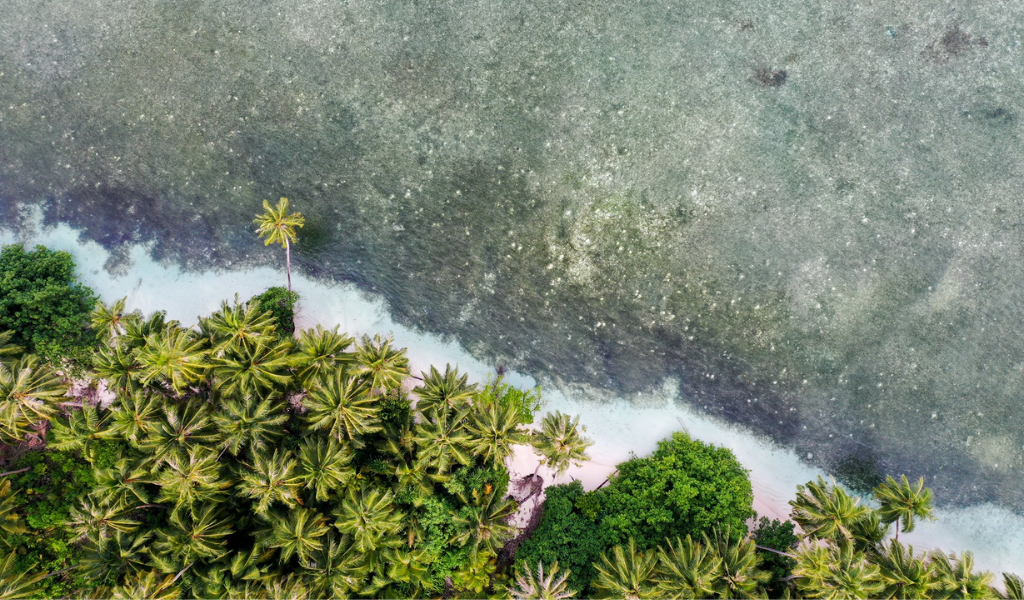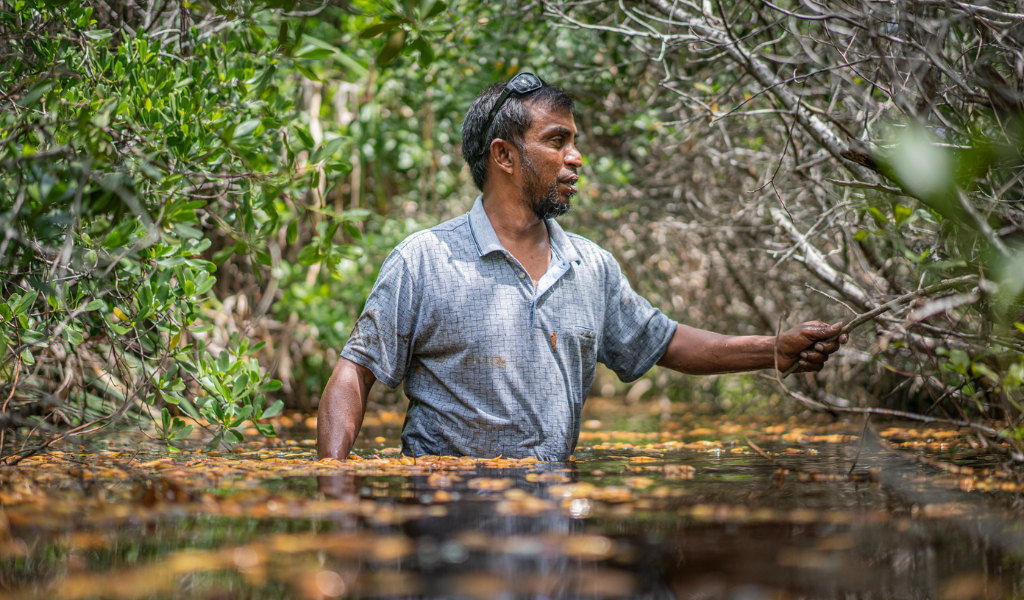

Deep in the Heart of Laamu, This Island is a Haven for Green Sea Turtles
Monday 10th of May 2021
Turtles have roamed the Earth since the pre-historic times, outliving even the dinosaurs! These cold-blooded animals are found mostly in tropical waters, surfacing up for air every now and then. On average, they can stay underwater for 5-7 hours.
By nature, a turtle is constantly migrating throughout its life span. They spend their early years navigating ocean currents in the open seas until they have reached a certain size, at which it will be safe for them to venture into more predator-dense feeding grounds closer to shore. These hard-shelled giants can reach up to 134 cm in length.
Green Sea Turtles actually get their name from the green tint in their fatty tissue caused by munching on seagrass as a primary source of food. Their constant act of grazing the meadows for algae contributes to maintaining the health of seagrass beds and the reefs they loyally call home.
By some miracle, turtles always find their way back to their hatching grounds when it's time for them to nest. It is a daunting process for the turtles, having to drag their massive bodies across the beaches, digging a safe enough hole to lay eggs in and bury them well so that it can be hidden from the many predators. We as humans, knowingly or unknowingly in the past, have been destroying the world, one piece of plastic at a time. Due to the massive amount of plastic pollution in the oceans currently, survival rates of Green Sea Turtle babies into adulthood have drastically decreased to 1 in every 1000.

The Maldives is a tropical haven for many megafaunas that thrive in the pleasant environmental conditions found in its geography. Specifically, the atoll of Laamu has been home to some of the most significant turtle homes in the country. In 2006, the Government declared the island of L. Gaadhoo located at the largest channel opening in the archipelago, as the most significant turtle nesting ground in the Maldives.
Its prime location makes the island of Gaadhoo a part of an abundant ecosystem that hosts a myriad of marine life. Uninhabited since 2015, the turtle nesting numbers have decreased to the lower 150s, a 40% decrease from what it was in the 1980s. Once a thriving nesting ground, the vast beaches of the island were constantly monitored by the local custodians of the turtle nests. Their leaving the island opened it up to uncontrolled poaching.
The Olive Ridley Project, in partnership with Six Senses Laamu, has been regularly surveying the nesting activities on the island of Gaadhoo since 2018. They have recorded higher nesting numbers throughout the year and an appreciable decline in poaching activities in the timeline. The religious surveys and monitoring have been elemental in ensuring that the Green Sea Turtles on endangered IUCN Red List find safety in the waters and shores of Maldives.

In addition to being a turtle nesting sanctuary, the mangrove forest on the island hosts juvenile fish and migratory birds, some vulnerable and even threatened to extinction, during the monsoon seasons. The surrounding seagrass meadows that ring the island's house reef are also full of life and shelter. It is home to over 90 species of fish that are only native to the island, a unique factor even for Laamu!
This article is a remake of an informative blog article by Isha Afeef, featured on the Olive Ridley Project. Photos: MUI by Six Senses Laamu